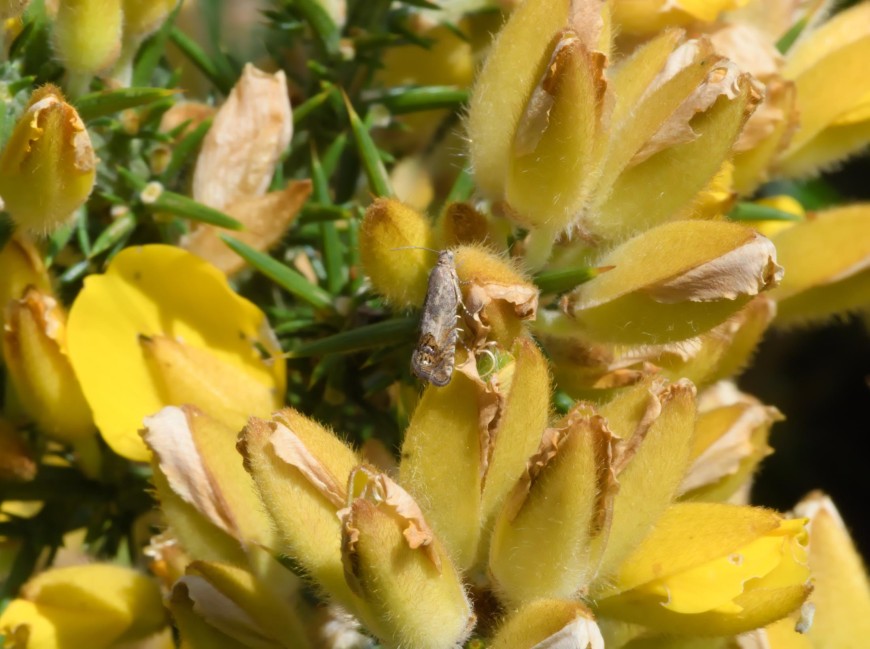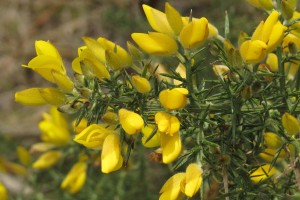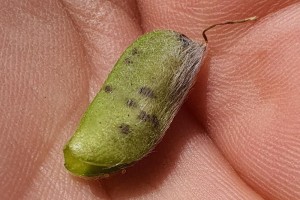Gorse pod moth
History in New Zealand
Gorse pod moths are native to Europe, and they were first imported from England by the DSIR in 1989. The moths were mass reared and released throughout New Zealand in the early 1990s. Gorse pod moths are now becoming widespread in both the North and South Islands.
How would I find/recognise it and what is its lifecycle?
The best way to find gorse pod moths is to look on a warm sunny day when gorse is flowering (in the spring or autumn), but you may also see them during the summer. Gorse pod moths do not look particularly distinctive (the adults are 5-8 mm long, and pale brown in colour) but you can identify them by their behaviour. Look for the moths flying around gorse stands in an erratic circling manner, landing from time to time on the plants. The female moths tend to have larger bodies than males but are otherwise similar. A pheromone mixture is available that will attract male moths.
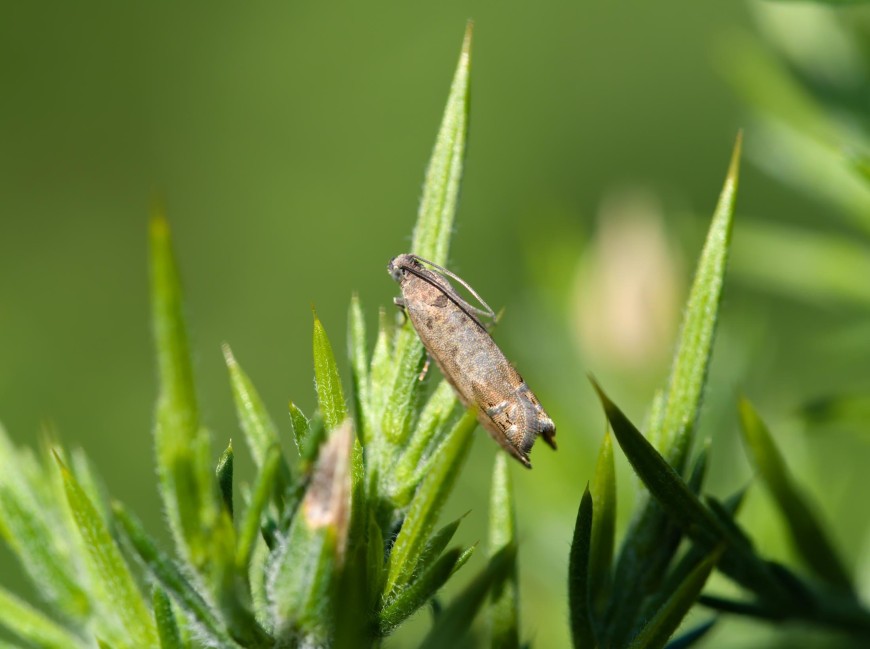
Image: gorse pod moth (Cydia succedana).
You are unlikely to see the eggs as the females hide them on the petals and parts of fertilised flowers that cover the developing pod. The shiny white eggs are flat and about 1 mm in diameter.
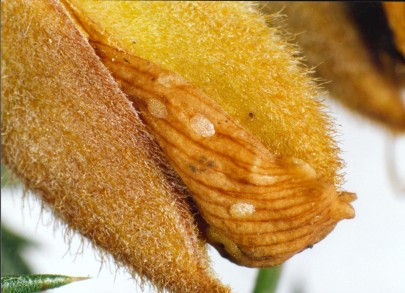
Image: gorse pod moth eggs.
After about 2 weeks, small creamy-white caterpillars with black head- capsules hatch and chew their way into the pods. If you open some pods and look inside you may see the caterpillars. However, if you see several white grubs then you have found the other agent that feeds on gorse seed, the gorse seed weevil (see Gorse seed weevil). Once a pod moth caterpillar has eaten all the seeds inside a pod it will burrow its way out and into a new pod. If you look carefully at pods you may see the small entrance/exit holes.
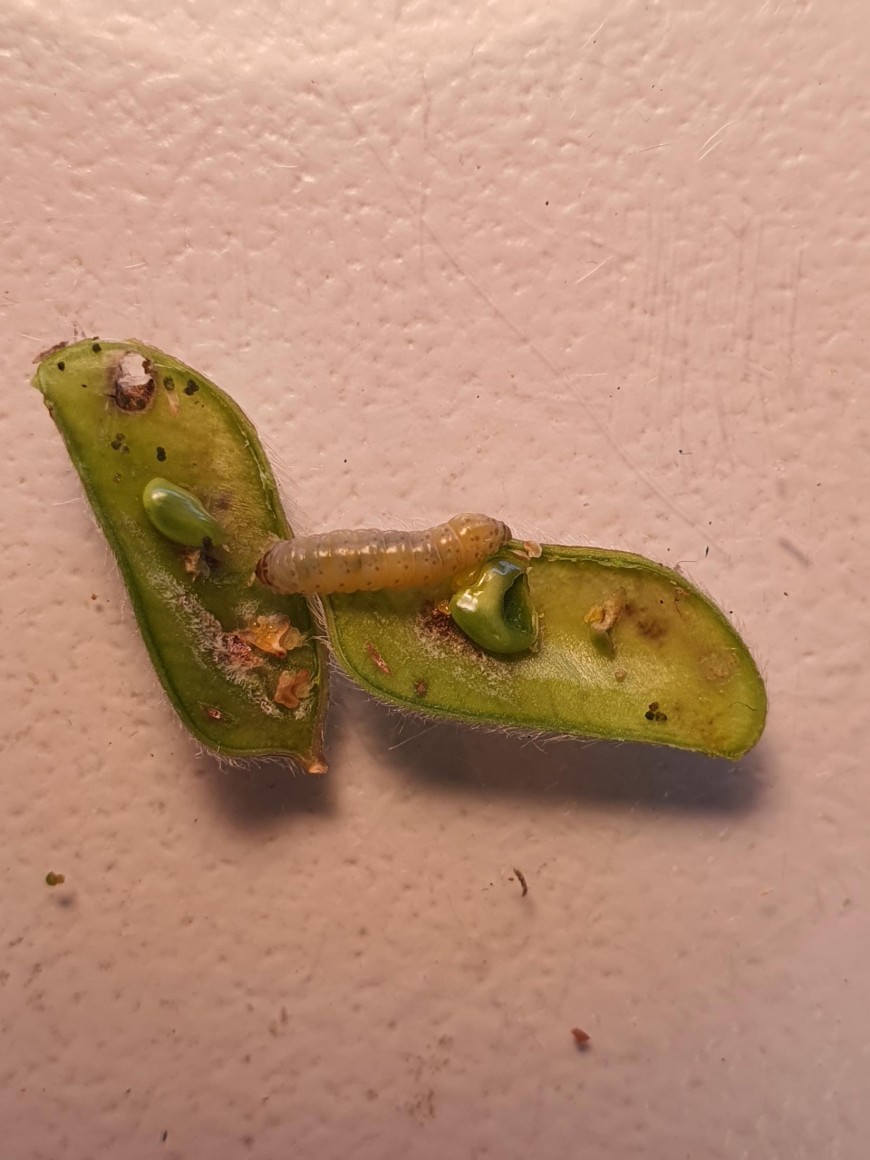
Image: gorse pod moth caterpillar.
The caterpillars feed for about 1 month and then leave the pods to pupate. Often they pupate on the gorse stems (sometimes they make a cocoon out of old flowers) or occasionally on the ground. The pupae are light brown. Some new adult moths emerge after about a fortnight (overall one generation from egg to adult takes about 2 months) and produce a second generation to coincide with the second flowering peak of gorse in the autumn. Others remain as prepupae and emerge the following spring.
Gorse pod moths are easy to differentiate from other gorse biocontrol agents or insects on gorse.
See Gorse colonial hard shoot moth, Gorse soft shoot moth, Gorse spider mite, Gorse thrips, Gorse seed weevil, and Native insects that damage gorse.
How does it damage gorse?
The caterpillar is the damaging stage and it feeds on the seeds. Each caterpillar can destroy all the seeds in two or three pods.
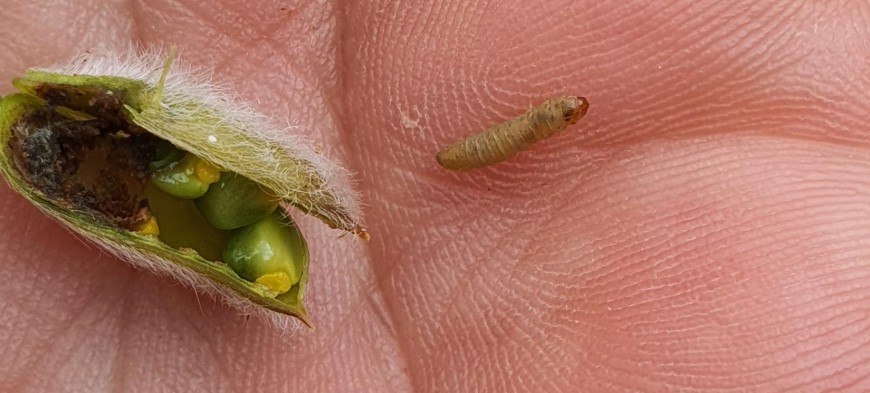
Image: gorse pod moth seed damage.
Image: gorse pod moth caterpillar.
Will it attack other plants?
Gorse pod moth is only likely to attack the seeds of gorse and Scotch broom (Cytisus scoparius), Spanish broom (Spartium junceum), Montpellier broom (Genista monspessulana), tree lupin (Lupinus arboreus), Russell lupin (Lupinus polyphyllus), lotus (Lotus pedunculatus), and possibly other exotic members of the Fabaceae family to a lesser extent.
How effective is it?
The effectiveness of the gorse pod moth has been investigated at a low? altitude site in Canterbury. The gorse pod moth and gorse seed weevil were jointly destroying between 90-100% of spring/summer seed crop (about half each), and the gorse pod moth was taking about 15-20% of the autumn/winter seed crop at that site. Another more recent study in Canterbury at a higher altitude site on the Summit Rd showed join destruction of just 56% of spring/summer seed crop, no seed was produced in autumn/winter. The gorse pod moth was taking 14% of the spring/summer seed crop. Recent work in the Manawatu at a low altitude site showed joint destruction of only 21% of the total crop with the gorse pod moth taking 30% of autumn/winter seed.
How can I get the most out of it?
Gorse pod moths are now widespread. However, if they are not yet present in your area you can help to speed up dispersal by shifting moths from established areas.
How do I select a release site?
Read Guidelines for selecting release sites for biocontrol agents.
How do I collect it for release at other sites?
You can harvest infested pods in the spring or autumn - spring is probably the best time as the moths are more abundant then. Keep an eye on how the pods are maturing. It is important to leave them on the plant until they are leathery and green to light brown in colour. If you cut the pods too early then the caterpillars may not be able to complete development and may die. However, if you leave it too late then the pods will be empty. As a general rule you will need to shift the pods in October or May, but the timing will vary from site to site, and even from year to year.
You will need is a pair of secateurs or loppers, and paper rubbish bags or a small tarpaulin. If you have a large vehicle then you can cut down whole bushes (as they may have pupae on them) otherwise remove branches with ripe pods - be careful that gorse seed cannot escape so that you don't inadvertently spread gorse around the countryside. You need to shift at least 100 moths to each new site, so conservatively you will need to shift several hundred pods in the spring or at least 1000 pods in the autumn. Transport your infested pods as quickly as possible to the new site - do not leave them lying about in the sun. At the new site wedge the infested material into the uninfested bushes or leave it on the ground if there is no danger of it getting blown away.
Do not be tempted to catch moths with a garden- leaf vacuum as it damages their scales and they die soon after. The pheromone that we have available to attract the moths is not suitable for collecting them either as it only attracts males.
How do I manage the release sites?
Avoid activities that will interfere with the gorse pod moths' life cycle, e.g., avoid applying gorse control measures when pods, and therefore immobile moth life stages, are present on plants - at other times of the year the adult moths will be able to shift to undamaged gorse. If you are undertaking control measures over a large area then leave a few bushes nearby to act as a gorse pod moth reservoir.

